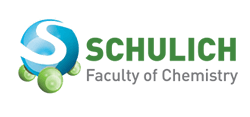The original NMR facility of the Technion Faculty of Chemistry came into being through the efforts of Professor Aharon Loewenstein. In 1962 the first NMR instrument at the Technion in the Faculty of Chemistry was the Varian DP60.
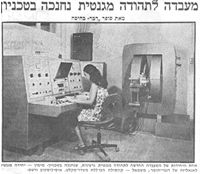
It operated about one year at the Hadar Campus before being moved to the new Chemistry building. It was followed by a series of instruments (may God bless their souls) : Varian A60 & T60, Bruker WP60, HFX90, and BKR322S (pulsed).
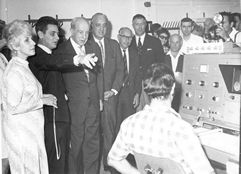
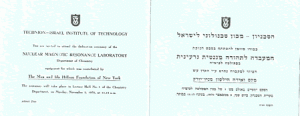
The photos and invitation from our archive demonstrate the celebrations surrounding the equipment contributed by the Max and Ida Hillson Foundation (1970).
invitation
In 1984 a state-of-the-art Bruker AM400 high-resolution NMR AM400 instrument was purchased. It remained in operation for twenty years.
The first of the AC200s arrived in 1987 through the efforts of Professor Ehud Keinan and others.
the first AC200
Equipped with a sample changer, it provided the organic chemistry student labs the means to obtain high-resolution NMR spectra of their synthetic efforts.
The original console was in use for twenty-two years. The magnet is still being used today in conjunction with a refurbished Bruker DPX console.
Over the years NMR spectra of thousands of molecules have been acquired with this instrument.
the second AC200
The need for a second AC200 was quickly addressed and added to the facility.
With this new spectrometer temperatures could be varied and in addition to the routine proton and carbon spectra, phosphorous and fluorine nuclei could now be probed.
During the eighties Technion’s Faculty of Chemistry could boast of two professors specializing in NMR: Prof.Aharon Loewenstein and Prof. Haggai Gilboa.
The NMR Facility’s Bruker AM and AC instruments provided a generation of students with sophisticated tools for investigating and identifying molecular structures, dynamics, and mechanisms of action at the molecular level.
The Facility was maintained by
Dr. Dan Igner

Mr. Jochanan Klopstock

Major changes were undertaken at the beginning of the new millennium.
The facility expanded. During the same period, three additional floors were added onto the roof of the NMR Facility – modernizing the chemistry teaching laboratories.
Inside and outside walls were broken, ceilings and floors were stripped, temporary lighting and plastic sheeting simulated “indoors” through the winter of 2001. A small space heater served for warming toes.
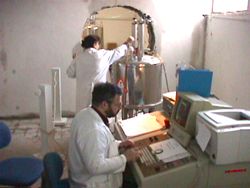
Despite the drilling and pounding and dust, research continued. The shims were constantly in flux as the tractors rolled by and research on the old spectrometers during renovations metal pipes were stacked overhead to hold the newly poured cement. Hammers and chisels and heavy equipment encroached on the peripheries of the strong magnetic fields. Compressed air removed clouds of dust that seeped into the hardware despite plastic protectors. During the cold, the rain, the power outages, and the general chaos, the facility remained open and the brave students continued running NMR spectra.
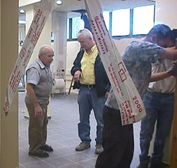
Finally, the floor and ceiling tiles were in place, the room was rewired, walls went back up as offices for facility managers were built, and the new paint quickly dried.
Once the newly renovated lab was ready in 2002, two new Bruker Avance high-resolution NMR spectrometers and an ESR instrument were installed, all generous dontations by Martin and Linda Blank and The Rosalinde & Arthur Gilbert Foundation
In 2009, an Israel Science Foundation (ISF) Converging Technologies Equipment Grant provided the means for acquiring our first 600 MHz NMR spectrometer. Additional funds were contributed for a 400 MHz spectrometer with a sample changer and a refurbished DPX console for use with a 4.7T field.

